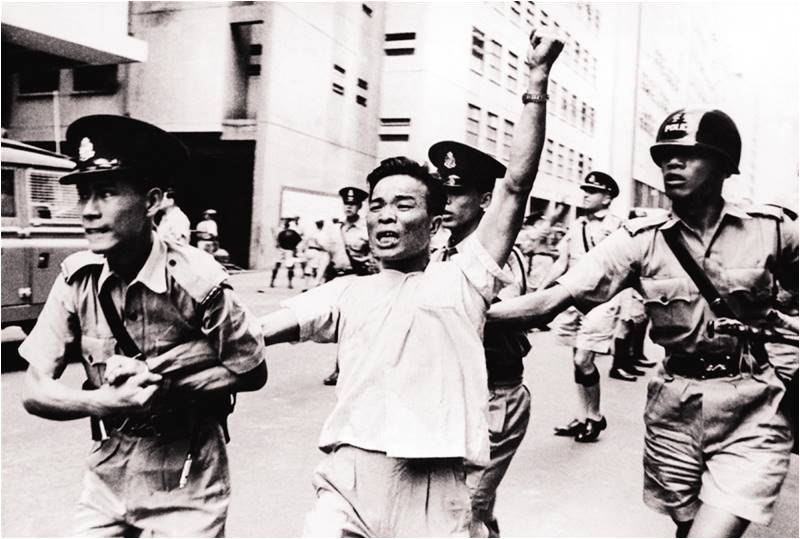
This photograph shows a pro-China protester being arrested by police officers during a demonstration in Hong Kong on May 18, 1967.
Though the initial protests of that summer seemed to have arisen organically among Hong Kong workers, China supported the movement from afar and issued an ultimatum demanding that arrested protesters be freed. The ultimatum, however, did not involve any question of British control of the area. The situation between the two nations was one of “mutual dependence:” Britain wanted to hold onto Hong Kong to protect its vast investments and to retain a Far Eastern headquarters for banking and trade interests. In the meantime, Red China had been building up its influence in the region. As a result, about one-fifth of the Chinese living there were openly pro-China. China also commanded the support of three of Hong Kong’s major daily newspapers, the most important labour unions and a large number of schoolteachers, which was one reason why a high proportion of young Chinese in Hong Kong were Maoists.
That July, when shots from across the Chinese border killed five Hong Kong police officers, the United Kingdom responded by sending in troops, the first armed confrontation between British and Chinese soldiers in Hong Kong since Communist rule had begun in China nearly two decades before. Though the stand-off between the two powers could have gotten even more intense, by early August things had calmed down.
This did not keep China and Hong Kong from getting closer in the decade that followed. Rather, they grew to rely on one another, economically at least. In 1979, China sent an annual $2 billion in exports to Hong Kong, while the same amount went back to the mainland in remittances from residents and earnings of Chinese companies located there. Hong Kong businesses relied on Chinese labor, while the Chinese government used Hong Kong as an outlet for its economic dealings with the rest of the world.
Though the initial protests of that summer seemed to have arisen organically among Hong Kong workers, China supported the movement from afar and issued an ultimatum demanding that arrested protesters be freed. The ultimatum, however, did not involve any question of British control of the area. The situation between the two nations was one of “mutual dependence:” Britain wanted to hold onto Hong Kong to protect its vast investments and to retain a Far Eastern headquarters for banking and trade interests. In the meantime, Red China had been building up its influence in the region. As a result, about one-fifth of the Chinese living there were openly pro-China. China also commanded the support of three of Hong Kong’s major daily newspapers, the most important labour unions and a large number of schoolteachers, which was one reason why a high proportion of young Chinese in Hong Kong were Maoists.
That July, when shots from across the Chinese border killed five Hong Kong police officers, the United Kingdom responded by sending in troops, the first armed confrontation between British and Chinese soldiers in Hong Kong since Communist rule had begun in China nearly two decades before. Though the stand-off between the two powers could have gotten even more intense, by early August things had calmed down.
This did not keep China and Hong Kong from getting closer in the decade that followed. Rather, they grew to rely on one another, economically at least. In 1979, China sent an annual $2 billion in exports to Hong Kong, while the same amount went back to the mainland in remittances from residents and earnings of Chinese companies located there. Hong Kong businesses relied on Chinese labor, while the Chinese government used Hong Kong as an outlet for its economic dealings with the rest of the world.

